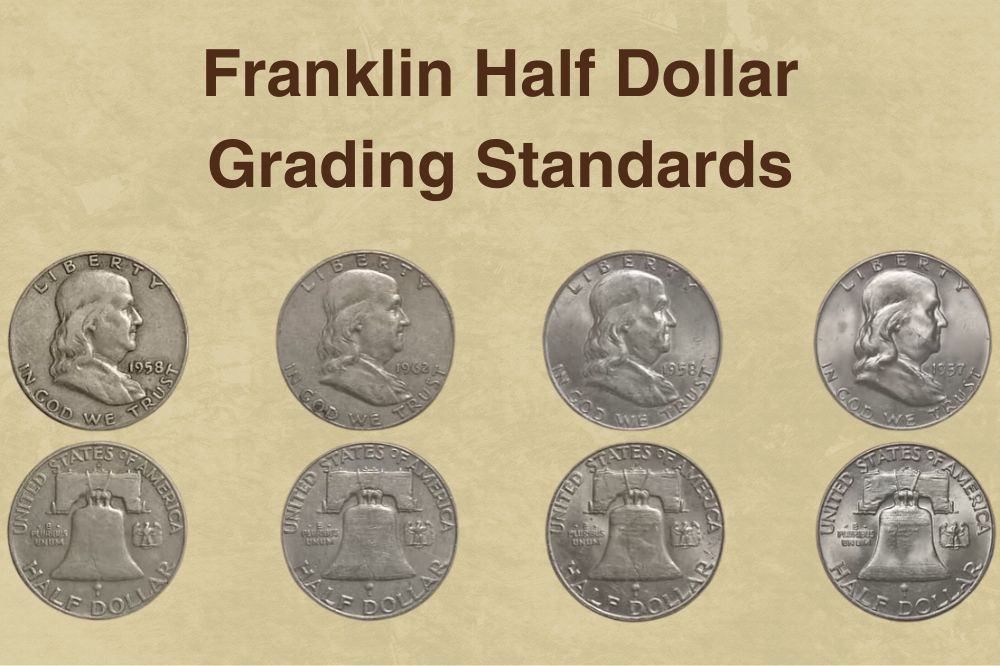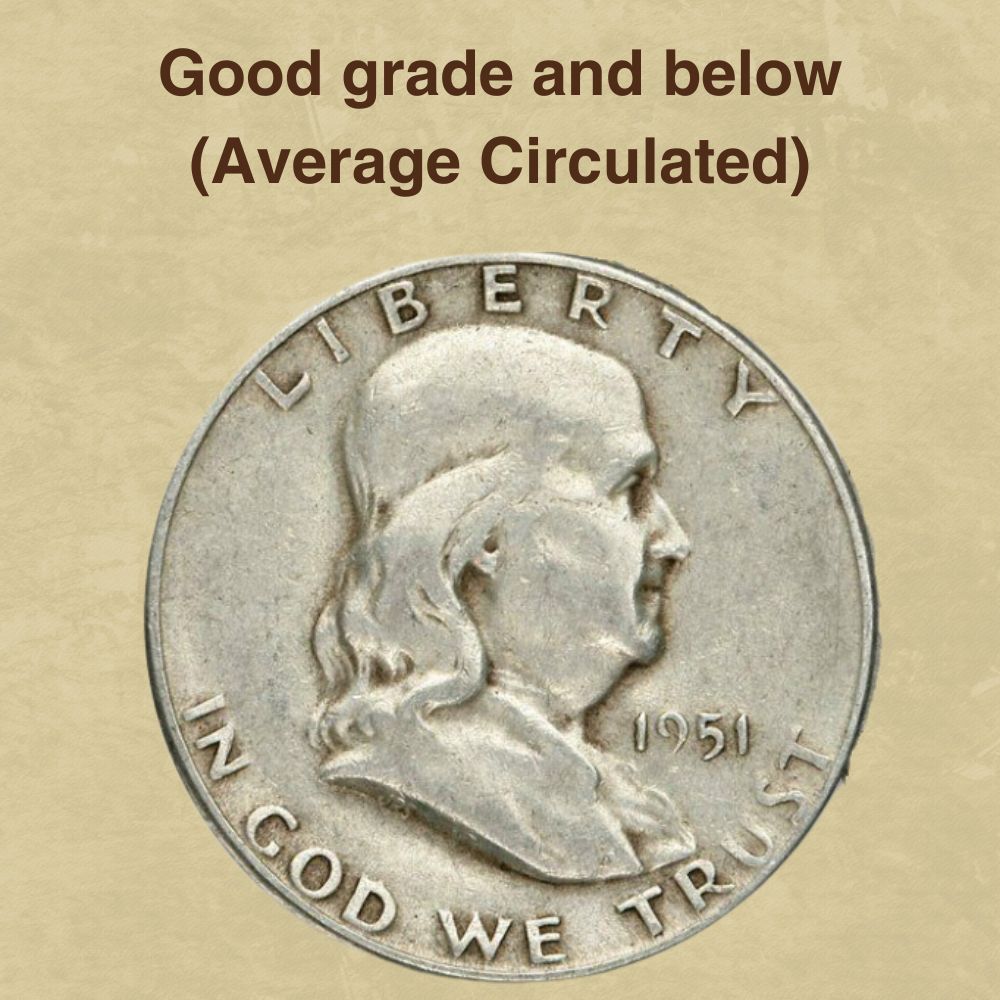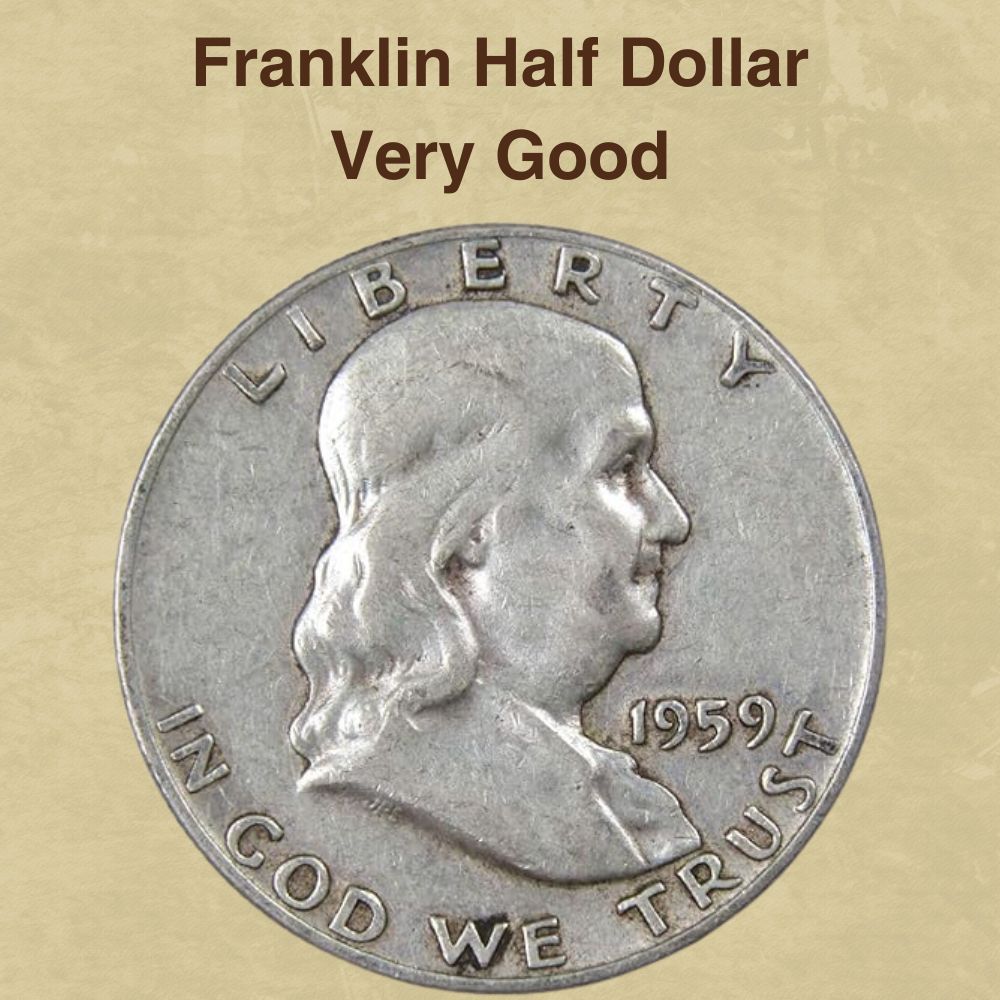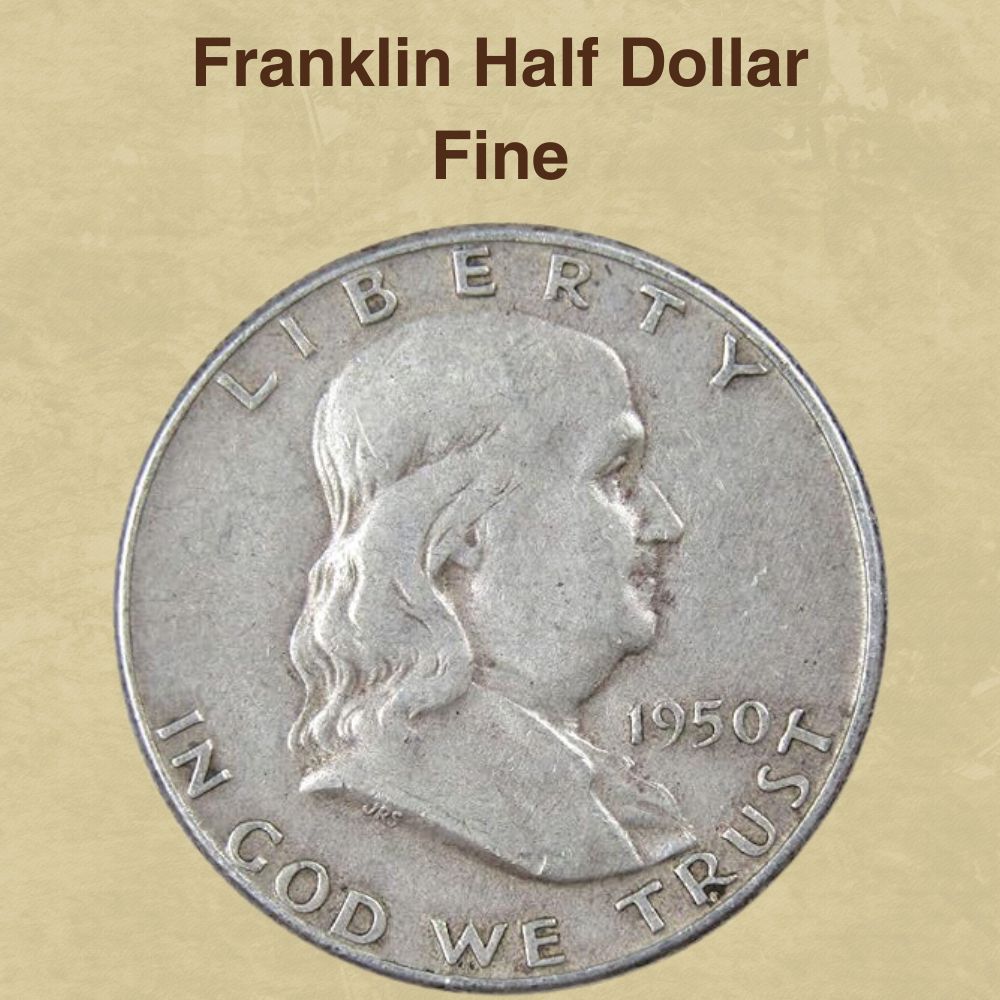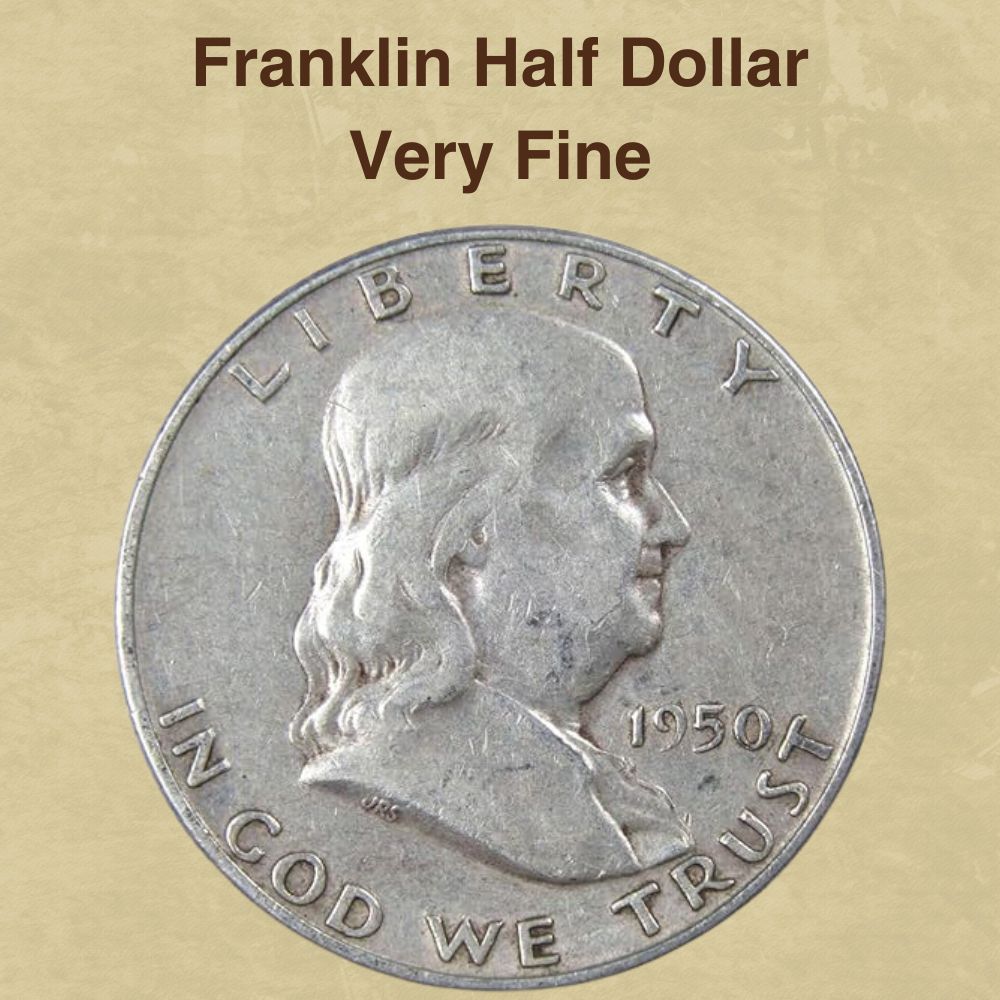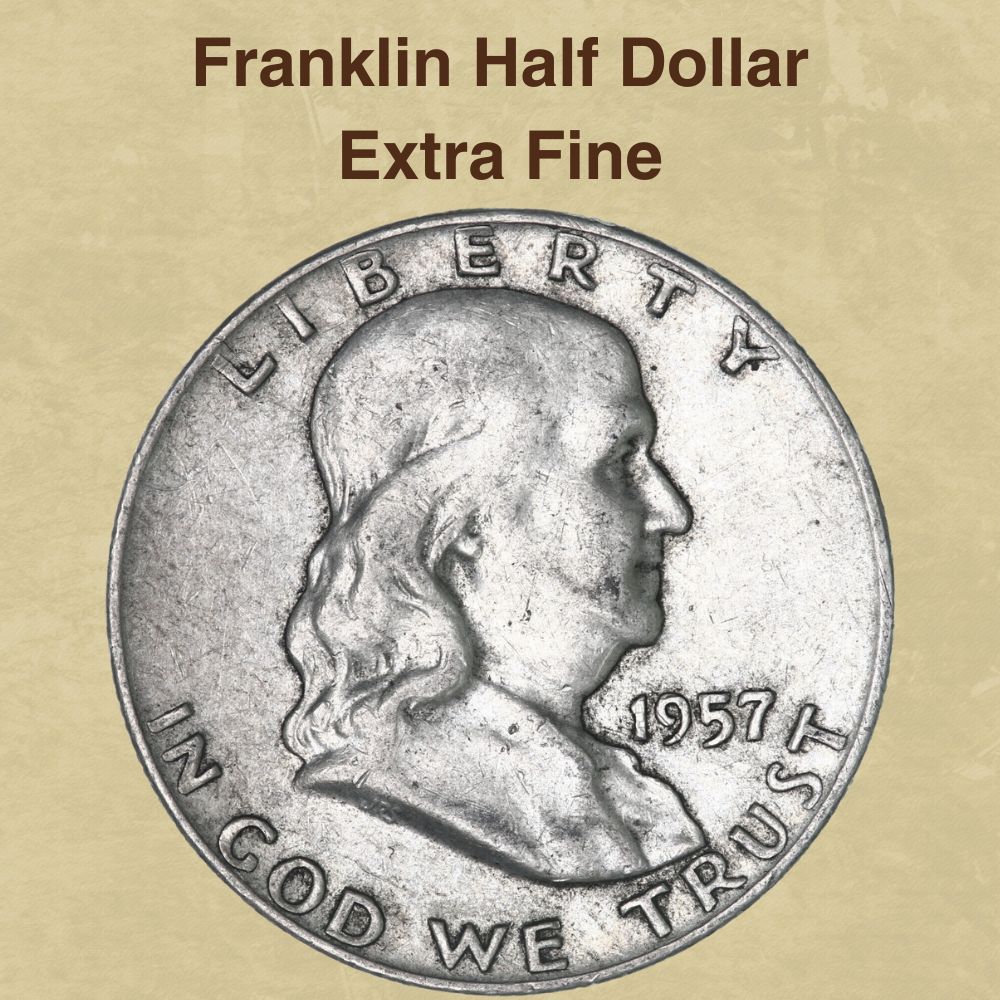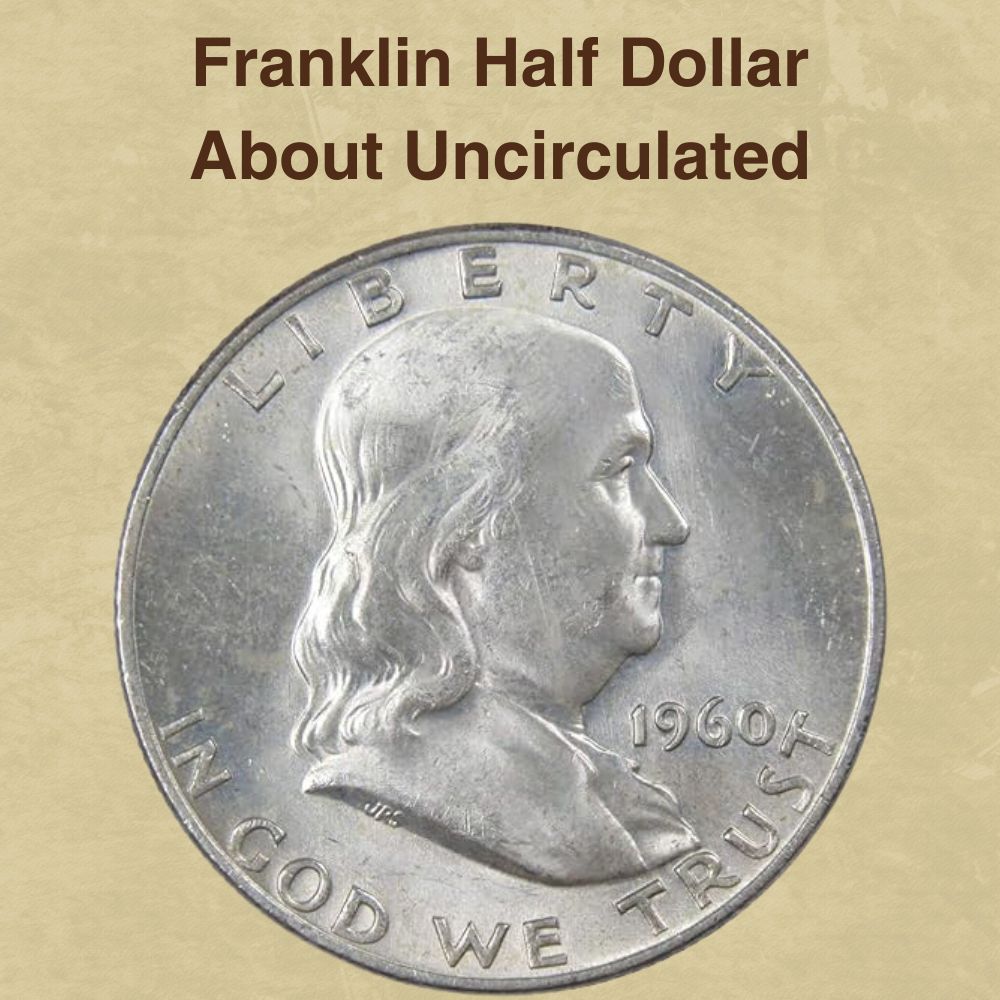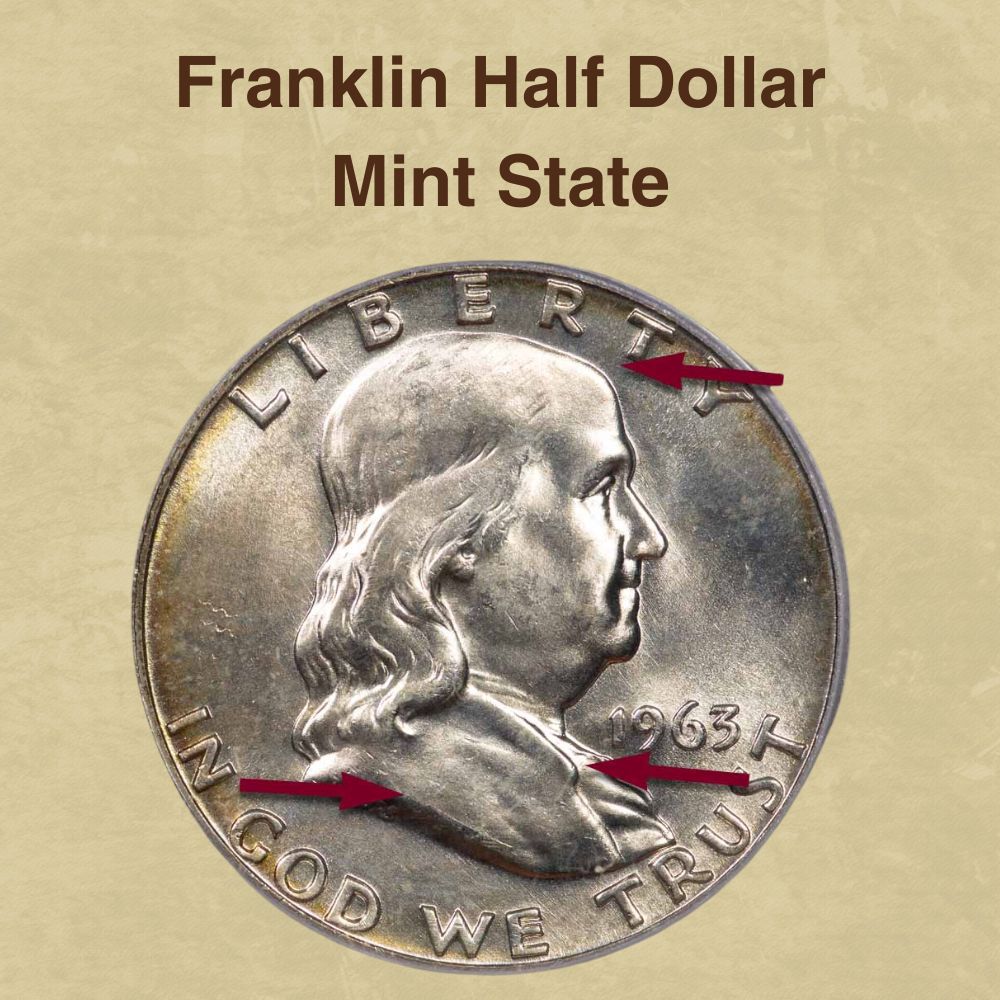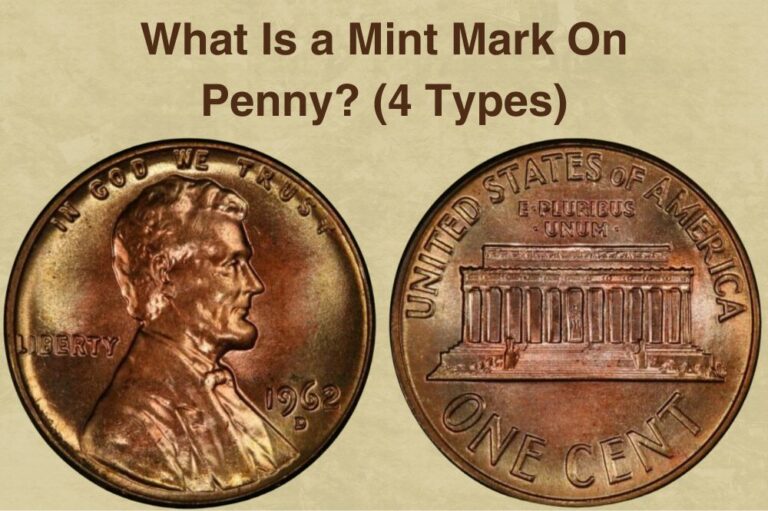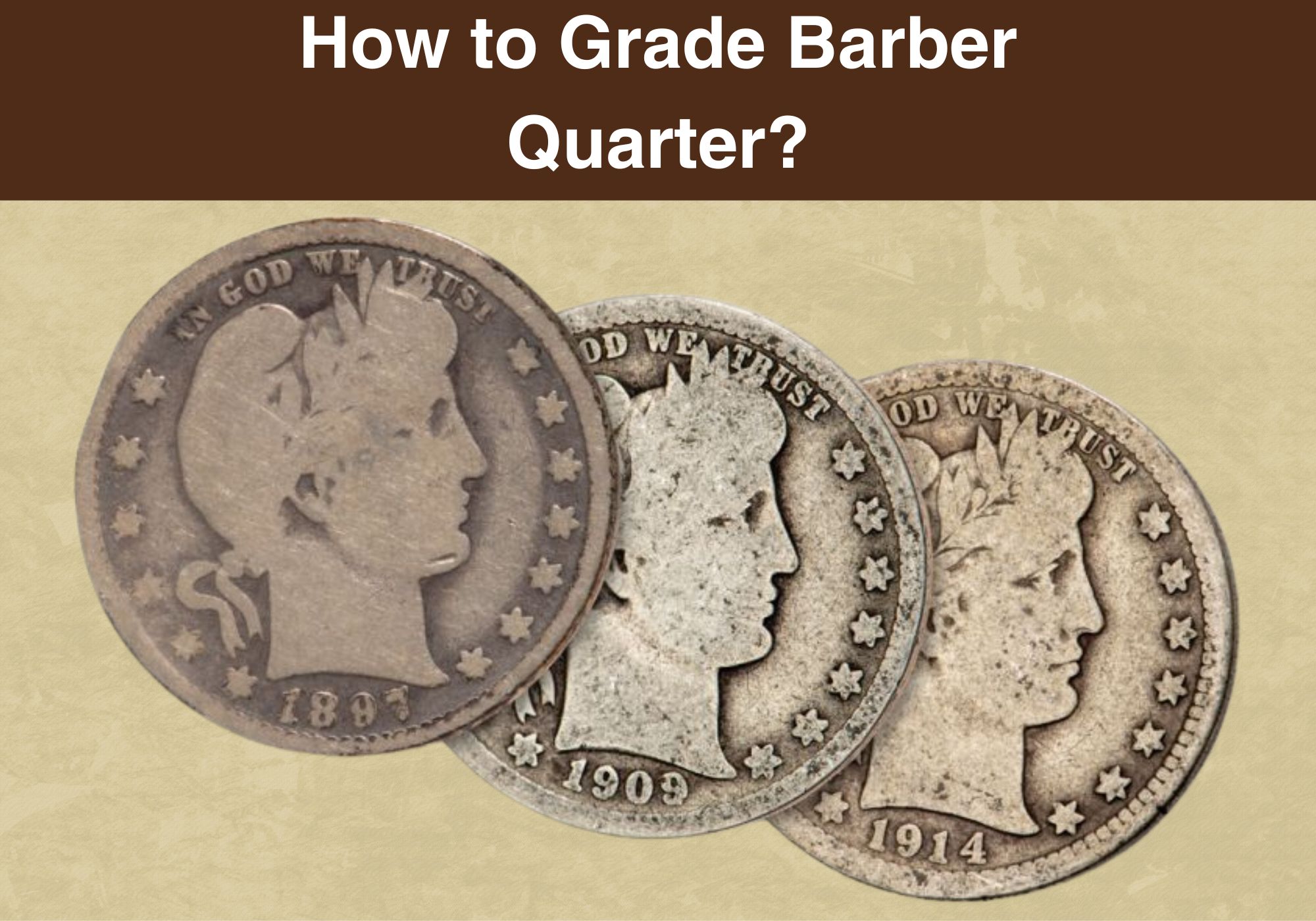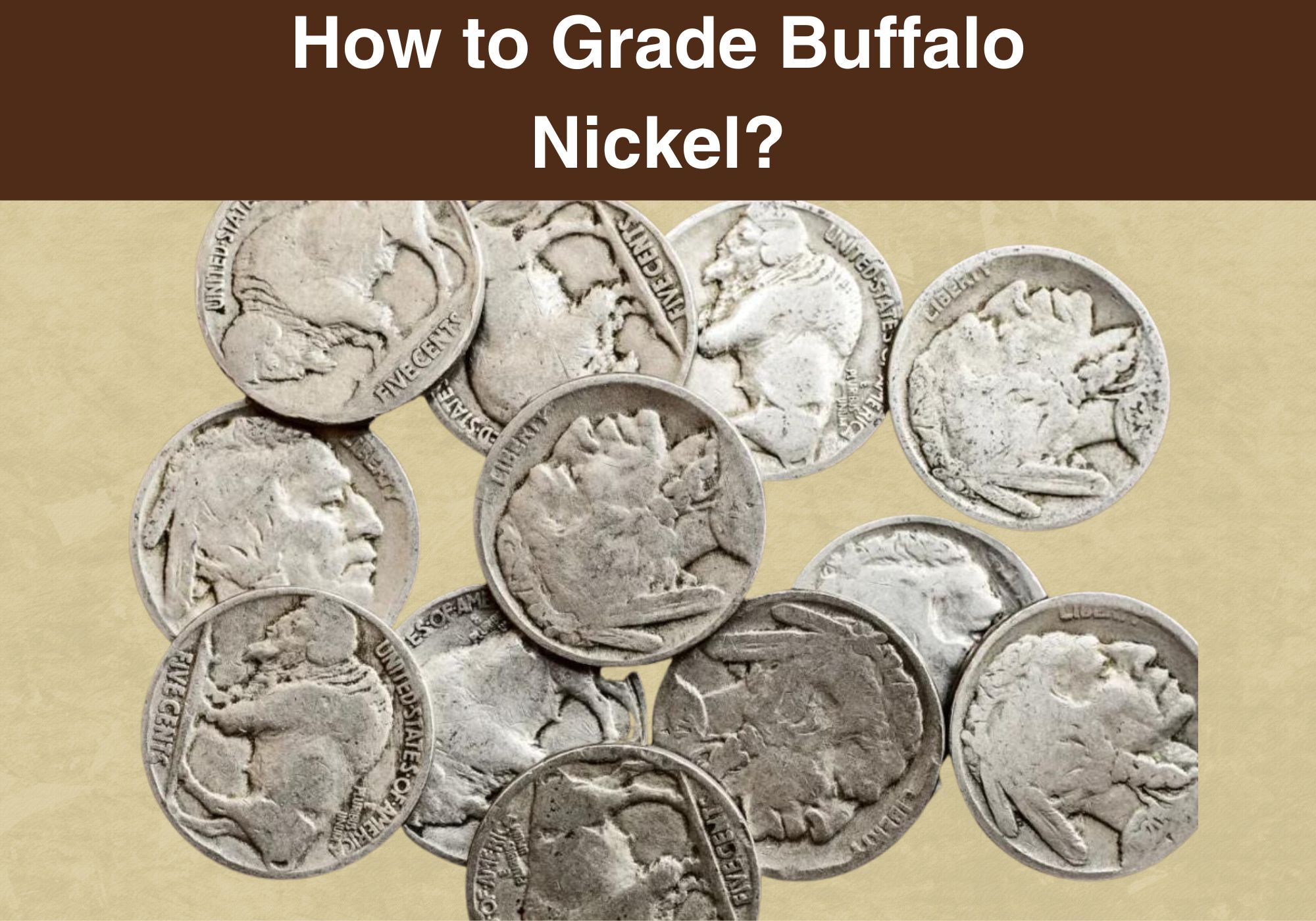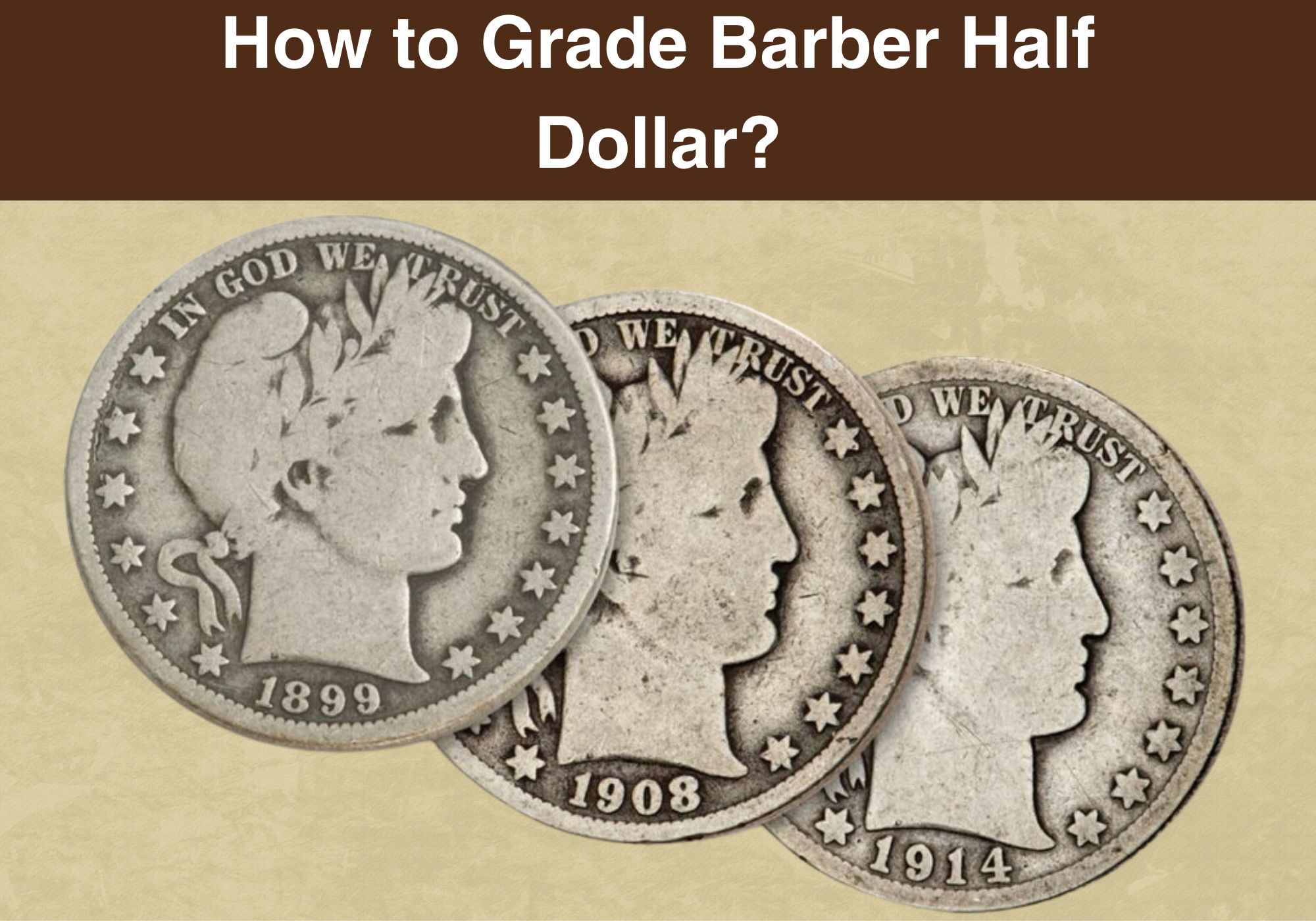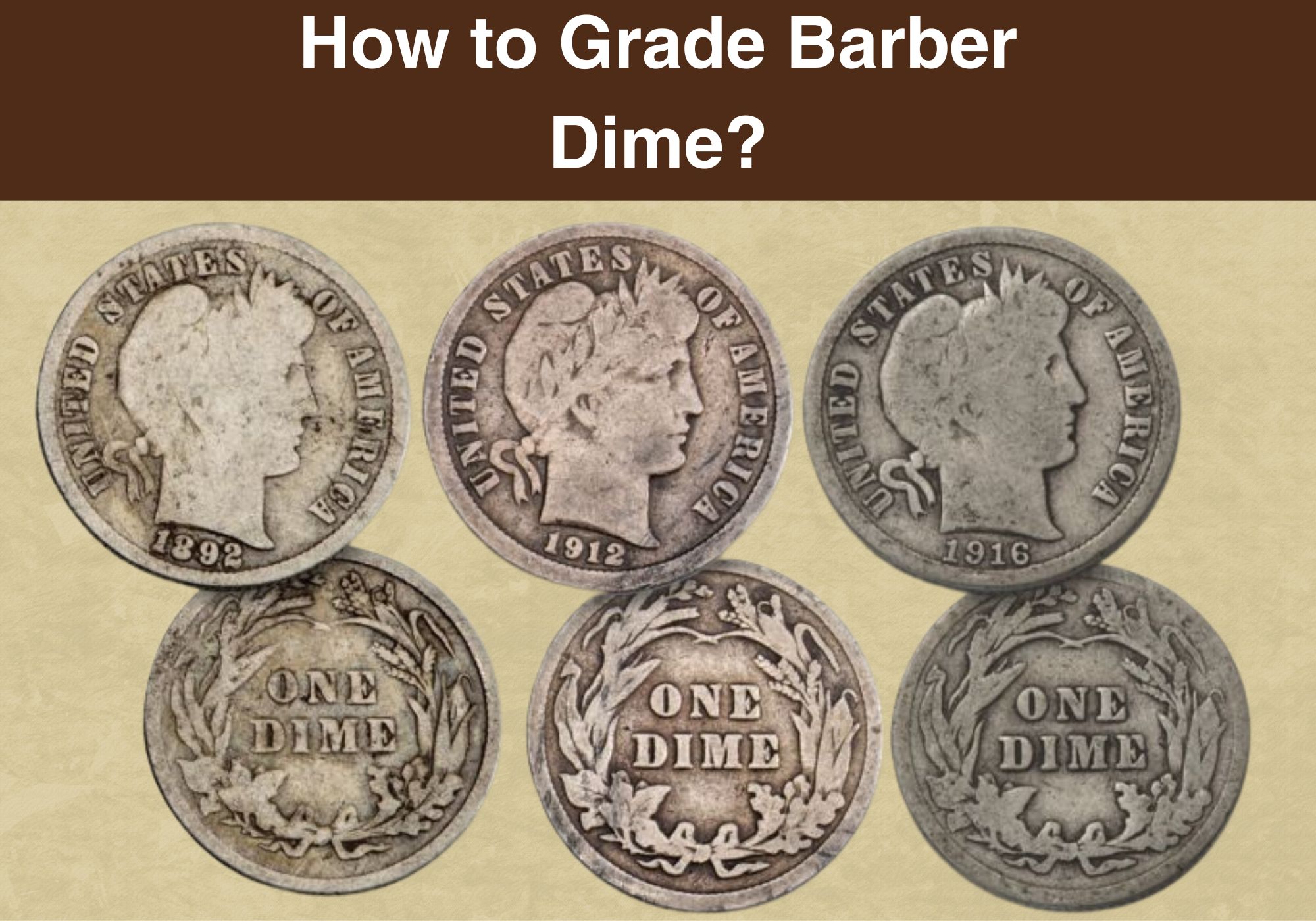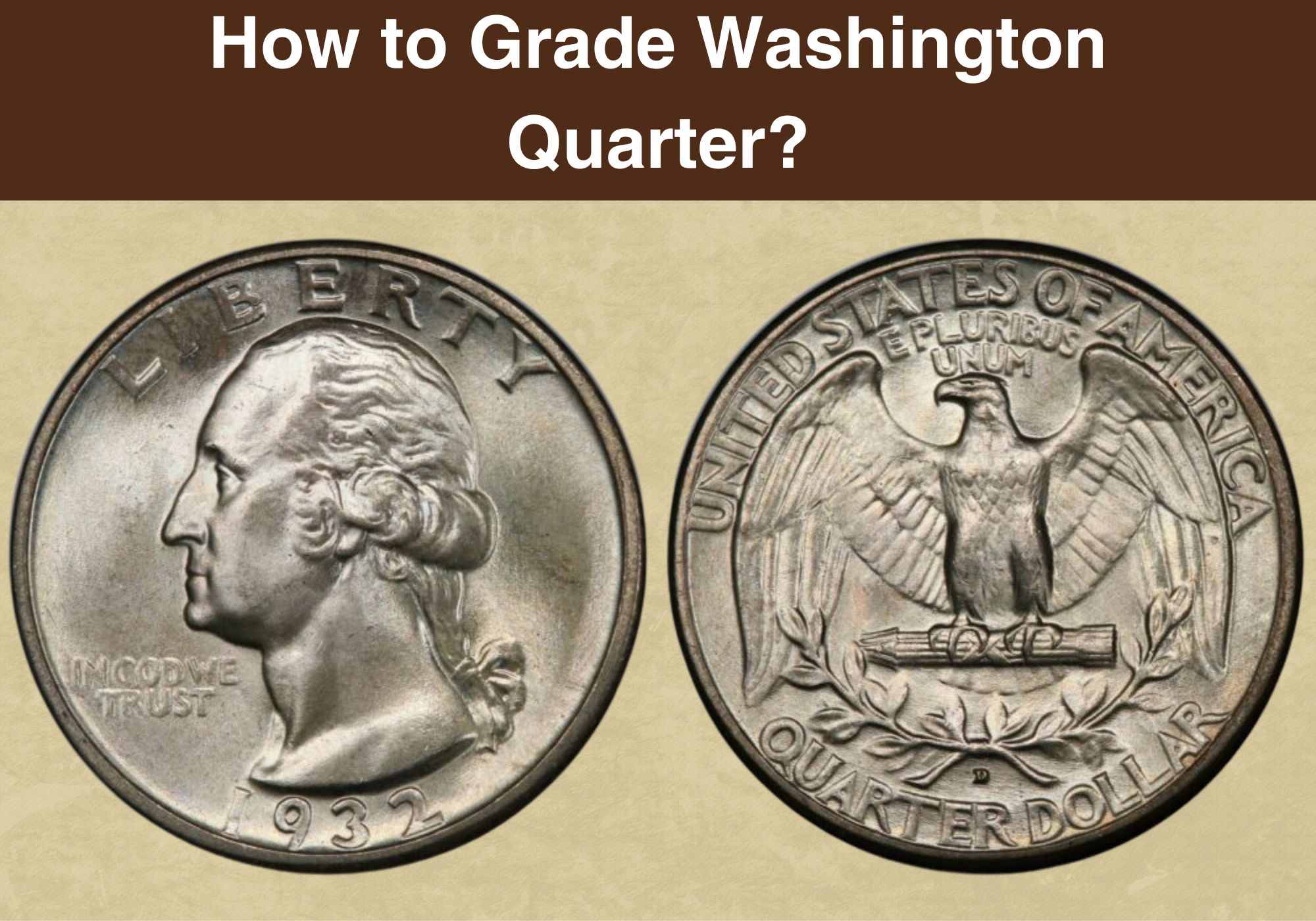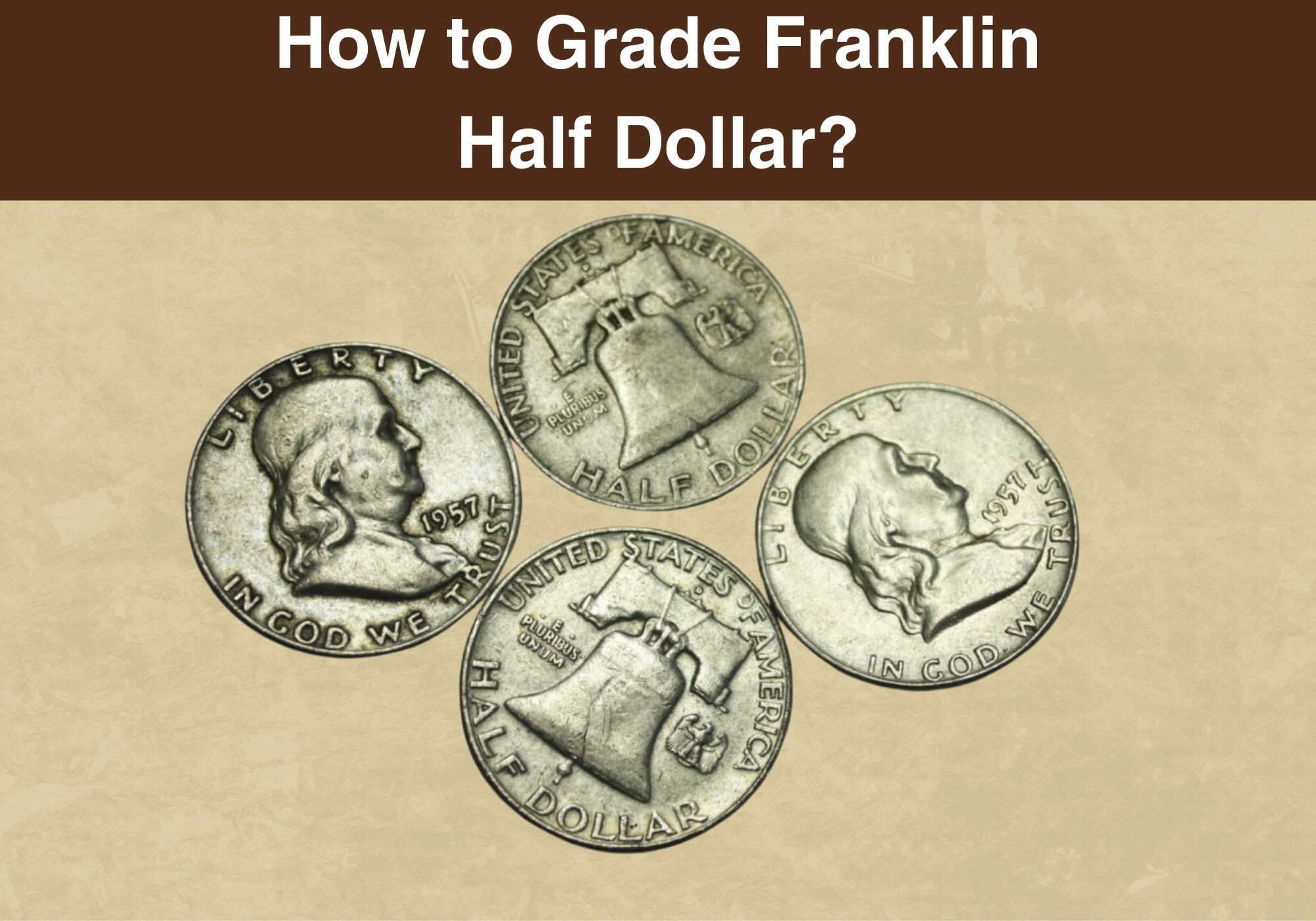
Coin Value Contents Table
Many collectors, particularly new ones, are unsure about how to grade Franklin Half Dollars. It can be a challenging task since even subtle differences in appearance and condition may significantly affect their value.
The best option to realize a fair value of your coin is to approach its condition’s judging traditionally. Using the Sheldon scale to precisely describe your specimen is the most effortless way to find its place between 1 and 70 grades.
Grading Standards
The crucial part of any coin value is its condition, so you should be careful with each detail and change in design. Besides, be aware that even coins sitting in the bag from the day of minting are often of lower rank than perfect.
The reasons are numerous, including so-called bag marks. Only following ANA grading standards can give you a precise picture, so you should determine the correct grade for a piece you have.
Regular coins
- Perfect Uncirculated (MS 70)
- Choice Uncirculated (MS 65)
- Uncirculated (MS 60)
- Choice About Uncirculated (AU 55)
- About Uncirculated (AU 50)
- Choice Extra Fine (EF 45)
- Extra Fine (EF 40)
- Choice Very Fine (VF 30)
- Very Fine (VF 20)
- Fine (F 12)
- Very Good (VG 8)
- Good (G 4)
- About Good (AG 3)
Proofs
- Perfect Proof (PR 70)
- Choice Proof (PR 65)
- Proof (PR 60)
Understanding Grades for Franklin Half Dollar
The Franklin half-dollars minting started in 1948, and their production was abruptly stopped in 1963 after the assassination of President Kennedy. Nowadays, these coins that pay tribute to this crucial historical figure are moderately collectible American coinage.
You can notice their simple design with relatively high relief and centered elements that leave vast empty space, particularly on the obverse. This feature makes these coins susceptible to visible contact marks, including so-called bag marks.
Slight traces have appeared because coins move in canvas bags, resulting in rare intact gems. In other words, although many modern coins are available in the mint state, it is virtually impossible to find those in the highest grades.
Franklin half-dollar |
|
| Face value | Fifty cents ($0.50) |
| Compound | Silver (0.900) |
| Coin weight | 12.5 g (0,40188 troy ounces) |
| Coin diameter | 30.6 mm (1,20472 inches) |
| Coin thickness | 1.8 mm (0,07086 inches) |
Only a few dates include scarce specimens in gem condition, including coins minted in Denver in 1949, 1950, and 1951. On the other hand, the Franklin half-dollars are well-known for the Full Bell Lines variation.
Since lower horizontal bell lines on the Liberty Bell are often incomplete, those with fully struck and clearly visible lines are sought after and incredibly collectible.
Pay attention to the sets minted in the 1950s since the noticeably worn master hubs caused a lack of detail sharpness. It is particularly evident on the coins’ obverse.
The US Mint replaced the reverse hub in 1956 but used the old and new ones inconsistently. That fact affected the visibility of the bell lines in coins minted in that period.
How to Grade Franklin Half Dollar?
When deciding to collect Franklin half-dollars, you should primarily look at each piece’s toning, luster, and the bell lines’ clarity. Their grading is based on the date and mint mark since particular sets come with subtle differences depending on these data. Let’s take a look.
1. Good grade and below (Average Circulated)
Since the US Mint issued Franklin half-dollars after WWII until the early 1960s, they are in a group of modern coins. Only specimens in Extra Fine rank and above are worth collecting for now.
Serious collectors never consider pieces in the lowest grades as collectibles worth their attention. Interestingly, they use one non-technical term – Average Circulated, to describe low-ranked half-dollars.
Obverse
This unofficial rank includes all coins with significant signs of wear and noticeably flat design. The only slight roundness appears in Franklin’s hair, eyebrow, and cheek. It is impossible to notice any details on the hair at the top of Franklin’s head, while strands of hair behind the ear are merged.
Reverse
The Liberty Bell is highly detailed in new half-dollars, but it is smooth in low-graded coins. The lettering on its surface is missing. The small eagle’s central part lost all details on the wing feathers, and you can see noticeable flatting on a strap and beam.
2. Very Good (VG, VG8, VG10)
These coins are a bit better looking than those in lower grades. Unfortunately, their appearance is not beautiful enough for most collectors, so there is no chance of finding someone to buy such a piece.
Obverse
You can see weak impress on the entire Franklin’s head with smooth hair area. It is impossible to notice prominent details from the top of the head to the ear. On the other hand, a coin rim is complete, while the inscriptions and the date are bold. The initials (JRS) below Franklin’s shoulder are recognizable.
Reverse
Letters on the bell are practically invisible, but all letterings and the mint mark are clear and bold.
3. Fine (F, F12, F15)
You can evaluate a coin in this grade but don’t have too high expectations. It is still too low ranking for modern specimens, and even novices avoid them.
Obverse
While Franklin’s cheek and hair are smooth and flat from his forehead to ear, you can spot some hair details on strands above his shoulder. Sinnock’s initials are still weak but visible.
Reverse
The bell is without inscriptions, and most lines at its bottom are flat and smooth. Most parts of beam straps are nearly plane.
4. Very Fine (VF, VF20, VF25, VF30, VF35)
You can expect slight differences between coins in different Very Fine sub-grades. Despite their better look, these half-dollars are still barely collectible.
Obverse
You can notice flat spots on the hair on Franklin’s shoulder, on his jaw, cheek, and behind the ear. The hairline is weak, but 75% of the lines and some details are visible.
Reverse
The letterings on the bell show wear and tear, but some design details can be noticeable. Half of the lines near the crack at the bell base and top, as well as the straps on the beam, are visible.
5. Extra Fine (EF40, EF45)
You can be satisfied with one such coin since its appearance is pleasing, and the main design details are visible.
Obverse
On such graded specimens, the most wear and tear is visible on the Founding Father’s cheek, shoulder, and the highest hair points, particularly behind his ear. A hairline at the nape of the neck is sharp and moderately detailed.
Reverse
You can notice that coins graded this way have high points of beam straps and partial mint luster. Lines along the bell bottom are well-defined, partially separated, and only lightly worn. The lettering written on the bell is worn out, particularly in the central part.
6. About Uncirculated (AU50, AU55, AU58)
As you know, this grade is the highest ranking for coins that spent some time in use. The difference compared to other circulated specimens is in the length of use, which is usually very short in this case. That results in less wear and tear on the surface and most details preserved.
Obverse
These half-dollars show only traces of wear and tear, primarily on the highest design spots. You can see them on Franklin’s cheek and hair behind his ear and shoulder.
Reverse
The half-dollars in this grade are decently preserved, with traces of wear and tears only on the highest points. You can see slightly flattened lettering on the bell and signs of wear along the ridges at the bottom. Mint luster is almost entirely present, at least 75%.
7. Mint State (from MS60 to MS70)
Even though most people consider all uncirculated coins equal, they come in different sub-grades. In fact, the Sheldon grading scale differentiates ranks from MS 60 to MS 70 based on the fineness of details and contact mark presence.
There is one thing you should always have in your mind. Even though you have one never-used coin, it can’t be ranked Mint State after cleaning with abrasive agents. Therefore, never try something like that and leave the cleaning process to professionals.
Besides, be aware that it is impossible to treat all the Franklin halves equally. The reason is the master die that started deteriorating in late 1949. Therefore, appraisers divide half-dollar strike characteristics into a few categories:
1948 to 1949 halves – The best, fully detailed pieces with superb strike features.
1950 to 1954 halves – Coins with slight detail loss, primarily on Franklin’s hair.
1955 to 1959 halves – The worn-out master die created the less detailed Franklin profile without clearly differentiated hair wisps.
1960s halves – Reworked dies caused better details, but the new coins come in a different, a bit lower relief. They came with a lack of details in the bell line, making it almost impossible to find the FBL half-dollars.
1949 to 1954 halves from San Francisco – The insufficient pressure during minting caused half-dollars with weak details and without Full Bell Lines, probably without an exception.
Summary
The only way to rank Franklin half-dollars accurately is to use the 70-point scale that precisely classifies each coin into the appropriate grade. You should pay attention to their current look, the amount of wear, every minting imperfection, and subsequent damage.

